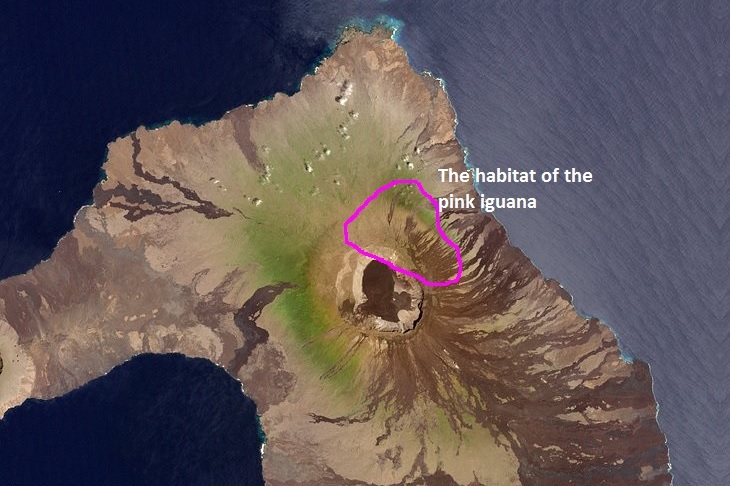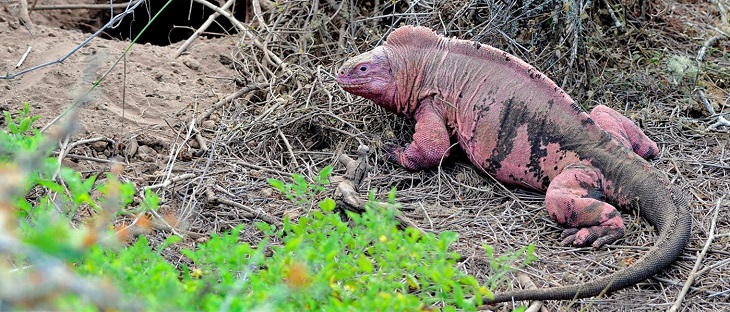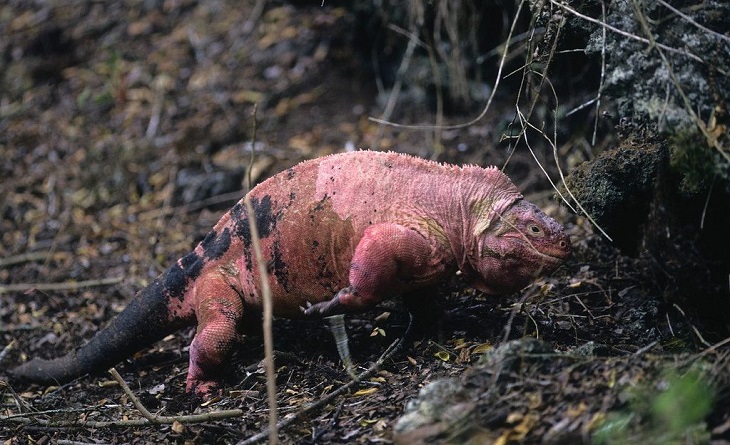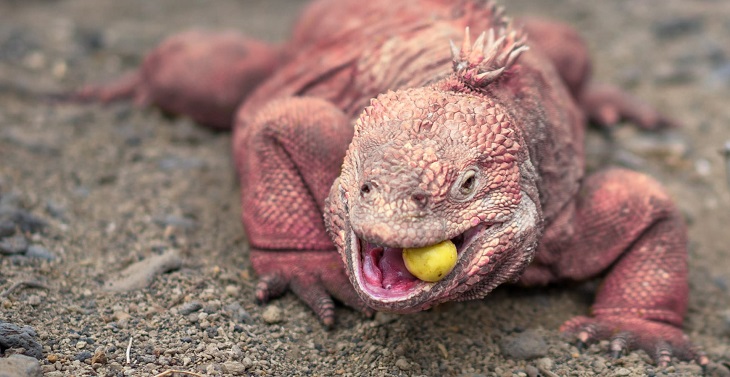
SIGN UP TO RECEIVE
15% OFF
IN YOUR NEXT TOUR

The Pink Iguana of the Galapagos: A New Endemic Species
SCROLL DOWN TO READ

The Pink Iguana of the Galapagos: A New Endemic Species
SCROLL DOWN TO READ
The Pink Iguana of the Galapagos: A New Endemic Species
Despite the attention they receive, the Galápagos Islands continue to unveil astonishing evolutionary surprises. When Charles Darwin visited the Galápagos, he observed both marine iguanas (Amblyrhynchus sp.) and land iguanas (Conolophus sp.), yet he never encountered the rare pink, black-striped land iguana. This intriguing creature remained unseen until 1986, when it was accidentally discovered by a park ranger.
Initially, researchers believed these pink iguanas were either albino or individuals stained by some external agent. However, a field visit to the volcano revealed that they are, in fact, a distinct species: the Galápagos Pink Land Iguana (Conolophus marthae), which is endemic to Wolf Volcano on Isabela Island.

Genetic studies suggest that the split between marine and land iguana lineages could have occurred as recently as 11 million years ago. At that time, the archipelago had not yet taken on its current configuration, and none of the present islands had emerged. This raises the possibility that the Pink Iguana may have experienced severe demographic reductions in the past. Notably, the oldest extant islands in the archipelago—San Cristóbal and Española—are at least 4 to 5 million years old, if not older. Given its present distribution, the Pink Iguana poses an intriguing puzzle, as it is found only on Volcán Wolf, which is considered younger than Volcán Sierra Negra, the oldest volcano on Isabela Island.

The entire range of the Pink Iguana is confined to Volcán Wolf on Isabela Island. As the third species of land iguana in the Galápagos, it shares this title with the Yellow Iguana (Conolophus subcristatus) and the Pale Iguana of Santa Fe Island (Conolophus pallidus). Unlike its relatives, the Pink Iguana is less resilient to sun exposure. Its range is limited to less than 30 km², with a core area of under 10 km², concentrated at altitudes of 500 to 1700 meters above sea level.
Interestingly, there may be a seasonal shift in altitude, with Pink Iguanas concentrating at the crater rim at 1700 meters from May to July, then descending to 600 meters when vegetation begins to dry out. Remarkably, this iguana has not been observed within the caldera.

In the past nine years, no juveniles have been spotted, suggesting ineffective reproduction habits or unsuitable nesting conditions. The Galápagos Pink Iguana can coexist with its relative, the Yellow Galápagos Land Iguana (C. subcristatus), but it remains unclear whether these two species compete for nesting sites on Wolf Volcano. Currently, the population is alarmingly small, with only 192 mature individuals remaining, making it vulnerable to genetic, demographic, and environmental stochasticity. Although population trends are unknown, there is genetic evidence of past reductions, and juvenile recruitment has not been observed.
Additionally, the presence of black rats and feral cats in the area poses a threat as likely predators, similar to those known to prey on other Galápagos iguanas. The impact of ectoparasites and potential endoparasites on population fitness remains a concern.

Pink Iguanas are easily distinguished from the other two species by their flat dorsal head scales and prominent adipose nuchal crest with small conic scales.
Hybridization and introgression between C. marthae and C. subcristatus have occurred in the past on Volcán Wolf, although the extent and effects of this phenomenon have yet to be fully evaluated. Volcanic eruptions and periodic droughts may also impact this species.
The Pink Iguana's entire range is confined to Volcán Wolf, making it unique to that island and absent from the rest of the Galápagos archipelago. While there is still insufficient biological and ecological information about this iguana, plans are already in motion to begin captive breeding. Meanwhile, scientists are investigating whether anthropogenic, bacteriological, or natural factors are responsible for the reduced population.
